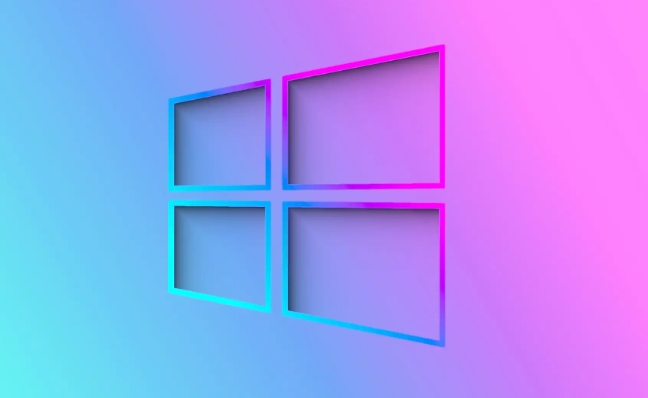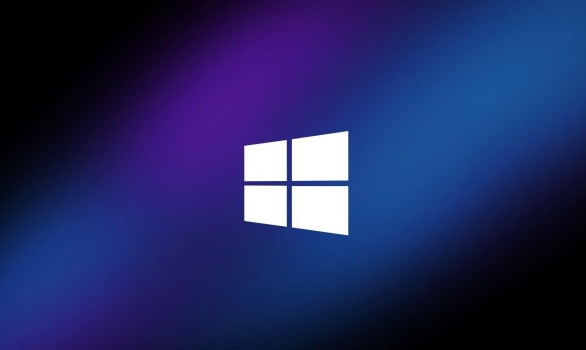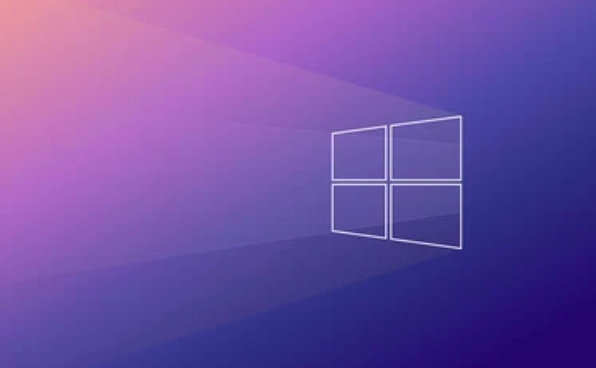Problems with Windows not recognizing a second monitor are usually caused by hardware connections, system settings, or drivers. 1. First check whether the connection cable is tight, try to replace the cable or interface, and confirm that multi-monitor support is enabled in the BIOS; 2. Enter the Windows display settings and click "Detection" or manually adjust the resolution refresh rate, and switch the display mode through Win P; 3. Update or reinstall the graphics card driver, and go to the official website to download the latest version to install; 4. Check the graphics card options and hardware compatibility issues in the BIOS settings. In most cases, the above steps can be used to solve the abnormal identification situation.

It's really a headache to not recognize a second monitor, especially if you want to expand your workspace or play games. This problem may be caused by a variety of reasons, but in most cases it can be solved through some routine troubleshooting and operations.

1. Check whether the connection cable and interface are normal
This is the easiest to be overlooked but also the most critical first step. Sometimes the problem is not the system, but the online material or interface.

- Make sure that the cable is plugged in : Whether it is HDMI, DP or VGA cable, make sure that both ends are plugged in tightly.
- Try changing a wire : Some wires only support screen output but not signal recognition. For example, some old HDMI wires do not support high resolution.
- Try changing the interface : If your graphics card or monitor has multiple interfaces, you can try changing different combinations to see if there is any response.
Small details: Some laptops require you to enable "Multi-Display Support" in the BIOS or Power Management settings to enable external monitors to be recognized.
2. Check the display settings of Windows
Even if the hardware is fine, the system settings are incorrectly set up may cause the monitor to not be detected.

Open Settings > System > Display and scroll down to the Multi-Display Settings section:
- Click "Detection" and the system will try to re-identify the connected monitor.
- If it still doesn't respond, you can click "Advanced Display Settings" to see if you can manually select the refresh rate and resolution (sometimes, you can manually select the screen when the automatic recognition fails).
- Make sure that the option "Make this monitor the main monitor" is not checked error applied to both monitors.
Tip: Press
Win Pto quickly call up the projection menu, try to switch modes such as "Copy" and "Expand", and sometimes it can also trigger the system to re-identify.
3. Update or reinstall the graphics card driver
Driver issues are a common cause of unrecognized displays, especially after upgrading the system or update.
- Open Device Manager > Display Adapter , right-click your graphics card, and select "Update Driver".
- If the update is invalid, you can try "Uninstall the device" and then restart the computer, and the system will automatically reinstall the driver.
- You can also download the latest drivers and install them manually (such as NVIDIA, AMD, Intel official websites).
Note: After updating the driver, it is recommended to enter the NVIDIA control panel or AMD settings to check whether the multi-screen configuration is correct.
4. BIOS or hardware limitation issues
Sometimes the problem is not at the operating system level, but at the underlying setup or hardware compatibility.
- Enter the BIOS (usually press F2/F10/Del when powering on), find out if there are any options for "Integrated Graphics" or "Multi-Display Support" to make sure it is on.
- If you are using a dual graphics card (separate graphics card), you may need to specify the default graphics card in the BIOS.
- Some old motherboards or notebooks do not support DP interfaces well, or they can only output multi-display signals through specific interfaces.
Basically, these common reasons and treatment methods. When encountering this situation, don’t rush to reinstall the system or suspect that the monitor is broken. If you check it step by step, most of them can be solved.
The above is the detailed content of Windows not detecting second monitor. For more information, please follow other related articles on the PHP Chinese website!

Hot AI Tools

Undress AI Tool
Undress images for free

Undresser.AI Undress
AI-powered app for creating realistic nude photos

AI Clothes Remover
Online AI tool for removing clothes from photos.

Clothoff.io
AI clothes remover

Video Face Swap
Swap faces in any video effortlessly with our completely free AI face swap tool!

Hot Article

Hot Tools

Notepad++7.3.1
Easy-to-use and free code editor

SublimeText3 Chinese version
Chinese version, very easy to use

Zend Studio 13.0.1
Powerful PHP integrated development environment

Dreamweaver CS6
Visual web development tools

SublimeText3 Mac version
God-level code editing software (SublimeText3)
 How to change the system display language for all users in Windows
Jul 31, 2025 am 08:18 AM
How to change the system display language for all users in Windows
Jul 31, 2025 am 08:18 AM
InstallthedesiredlanguagepackviaSettings→Time&Language→Language®ion,ensuring"SetasmyWindowsdisplaylanguage"isselected.2.Changethesystemdisplaylanguageinthesamemenuandrestart.3.OpenControlPanel→Region→Administrativetab,click"
 How to reset the Microsoft Store in Windows
Jul 31, 2025 am 08:23 AM
How to reset the Microsoft Store in Windows
Jul 31, 2025 am 08:23 AM
ResettheMicrosoftStoreviaSettingsbygoingtoApps>Installedapps,selectingMicrosoftStore,clickingAdvancedoptions,thenRepairandResetifneeded.2.Ifthatfails,re-registertheStoreusingPowerShellasadminwiththecommand:Get-AppXPackage-NameMicrosoft.WindowsStor
 How to reset the TCP/IP stack in Windows
Aug 02, 2025 pm 01:25 PM
How to reset the TCP/IP stack in Windows
Aug 02, 2025 pm 01:25 PM
ToresolvenetworkconnectivityissuesinWindows,resettheTCP/IPstackbyfirstopeningCommandPromptasAdministrator,thenrunningthecommandnetshintipreset,andfinallyrestartingyourcomputertoapplychanges;ifissuespersist,optionallyrunnetshwinsockresetandrebootagain
 How to install Windows on a Mac without Boot Camp
Jul 31, 2025 am 11:58 AM
How to install Windows on a Mac without Boot Camp
Jul 31, 2025 am 11:58 AM
Without BootCamp, installing Windows on Mac is feasible and works for different chips and needs. 1. First check compatibility: The M1/M2 chip Mac cannot use BootCamp, it is recommended to use virtualization tools; the Intel chip Mac can manually create a boot USB disk and install it in partition. 2. Recommended to use virtual machines (VMs) for M1 and above chip users: Windows ISO files, virtualization software (such as ParallelsDesktop or UTM), at least 64GB of free space, and reasonably allocate resources. 3. IntelMac users can manually install it by booting the USB drive: USB drive, WindowsISO, DiskU is required
 A guide to custom Windows installation options
Aug 01, 2025 am 04:48 AM
A guide to custom Windows installation options
Aug 01, 2025 am 04:48 AM
Choose"Custom:InstallWindowsonly(advanced)"forfullcontrol,asitallowsacleaninstallthatremovesoldissuesandoptimizesperformance.2.Duringsetup,managepartitionsbydeletingoldones(afterbackingupdata),creatingnewpartitions,formatting(usingNTFS),ors
 Step-by-step guide to installing Windows from an ISO file
Aug 01, 2025 am 01:10 AM
Step-by-step guide to installing Windows from an ISO file
Aug 01, 2025 am 01:10 AM
DownloadtheWindowsISOfromMicrosoft’sofficialsite.2.CreateabootableUSBusingMediaCreationToolorRufuswithaUSBdriveofatleast8GB.3.BootfromtheUSBbyaccessingthebootmenuoradjustingBIOS/UEFIsettings.4.InstallWindowsbyselectingcustominstallation,choosingtheco
 How to manage AppLocker policies in Windows
Aug 02, 2025 am 12:13 AM
How to manage AppLocker policies in Windows
Aug 02, 2025 am 12:13 AM
EnableAppLockerviaGroupPolicybyopeninggpedit.msc,navigatingtoApplicationControlPolicies,creatingdefaultrules,andconfiguringruletypes;2.Createcustomrulesusingpublisher,path,orhashconditions,preferringpublisherrulesforsecurityandflexibility;3.Testrules
 How to install Windows on a Mac
Jul 31, 2025 am 10:07 AM
How to install Windows on a Mac
Jul 31, 2025 am 10:07 AM
ForIntel-basedMacs,useBootCampAssistanttocreateadual-bootsystemwithWindowsbypreparingaUSBdrive,downloadingaWindowsISO,partitioningthedisk,andinstallingWindowsalongsidemacOSwithsupportdrivers.2.ForAppleSiliconMacs(M1/M2/M3),usevirtualizationsoftwareli






